Confident Sailor / Reluctant Sailor
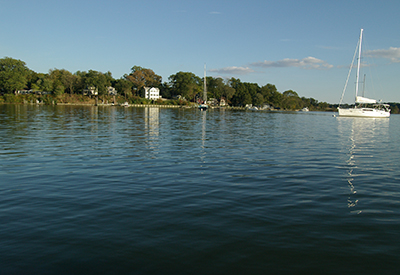
By Rob MacLeod
For three years following our return from a year-long trip to the Bahamas and back aboard our 1981 CS36 Traditional – Sojourn, Mary and I gave a number of talks to experienced and would be cruisers about planning and executing your dream cruise.
This was primarily Mary’s story and she always began with the words,
“It was our two kids, Kevin and Laura, who termed our first trip to the Bahamas ”Living his dream – on her terms”. We did it. There was no mutiny. No divorce.
We have been given this opportunity to share my story – that of the very reluctant boater who actually left the dock and Toronto behind.
There seem to be many people who identify with all of my niggles and fears. Are there any couples here where one is more enthusiastic about boating that the other? Well, that was us!
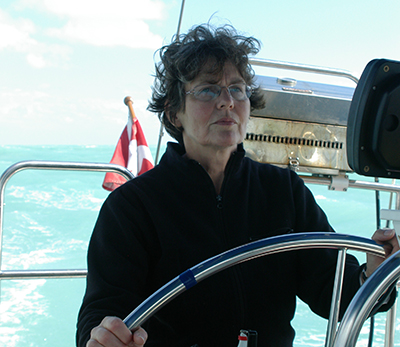 Turns out Mary was more than a reluctant boater, she was also a reluctant speaker, and as poised as she seemed, the nerves of speaking in public, caused her to hang up her microphone after three years. For the past year and a half, we have been preparing Sojourn for a return trip to the Bahamas, leaving in September of this year (2016). This article is divided into three parts – the original journey in 2009-2010; what we learned and what we plan for 2016-2017.
Turns out Mary was more than a reluctant boater, she was also a reluctant speaker, and as poised as she seemed, the nerves of speaking in public, caused her to hang up her microphone after three years. For the past year and a half, we have been preparing Sojourn for a return trip to the Bahamas, leaving in September of this year (2016). This article is divided into three parts – the original journey in 2009-2010; what we learned and what we plan for 2016-2017.
Original Journey (2009 – 2010)
In 2008 and 2009 the world experienced a significant economic event. I was working as a consultant and learning designer in two industries – homebuilding and automotive. Both industries ground to a halt in late 2008. Mary was looking at retiring in the near future, so we pulled the trigger and decided to take our CS36 Traditional – Sojourn, south for the year.
As Mary wrapped up her career in laboratory medicine, I started preparing Sojourn for the trip south. Mary started preparing us for the time away – insurance, medical, communications – all the stuff that would make being away manageable.
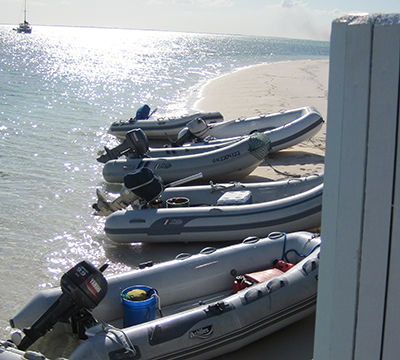 I will look at the technical aspects of taking a year off in the next section, Lessons Learned. But I would like to dwell for a moment on the non-technical, people side of packing it all in (or packing it up) and spending a year on your boat away from the Canadian Winter.
I will look at the technical aspects of taking a year off in the next section, Lessons Learned. But I would like to dwell for a moment on the non-technical, people side of packing it all in (or packing it up) and spending a year on your boat away from the Canadian Winter.
In our talk, we covered the ‘terms’ by which Mary said we could do this trip.
The short version of this (and you can see the entire presentation on our website (InformedBoater.com/video-blog/his-dream-on-her-terms/) is:
1. Timing and Location – 1 year to the Bahamas and back
2. Economics – Although we could not predict the actual cost, we set a maximum allowing for emergencies and contingencies. We went over that.
3. Motion sickness – Mary has chronic motion sickness. We found some good over-the-counter medicine that worked
4. Open water passages – This really concerned Mary, so we brought aboard other sailors for the passage from New York to Cape May, NJ and the Gulf Stream Crossing.
5. Communication – Our daughter was pregnant with our first grandchild and we wanted to know we could be in touch with her in a timely and quality manner.
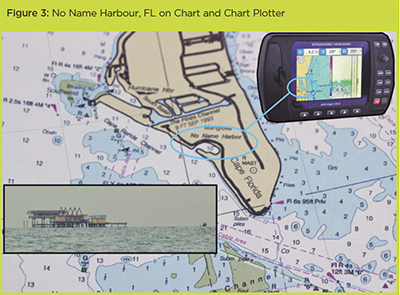 We had success in most of these areas. Plus, Mary became a confident sailor and coming home we travelled from Great Sail Cay in the Bahamas to Cobourg, ON in just 30 days, with five open water passages (each a day, a night and part of the second day) with just the two of us on board.
We had success in most of these areas. Plus, Mary became a confident sailor and coming home we travelled from Great Sail Cay in the Bahamas to Cobourg, ON in just 30 days, with five open water passages (each a day, a night and part of the second day) with just the two of us on board.
Lessons Learned
Cruising – the dream is very different from cruising – the reality. I sum up our 2009-10 trip by answering the question, “How did you spend your down time?”. My answer – “Down in the bilge, down in the lazerette and down in the engine room.” And this sums up the reality of taking a 28-year old boat that had been primarily daysailed and then living on it for 13 months and travelling over 3,000 NM under power.
The stress on the systems in one year is equivalent to 5 to 10 years of sailing in and our of your home port. Older boats need a lot more preparation before taking on a longer trip.
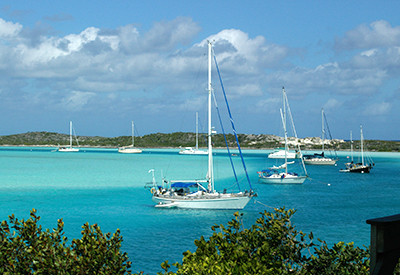 Our big learning can be summed up as, “what we worked on before the trip, worked – what we didn’t work on before we left, we fixed, and fixed and fixed.” Here is the list of what we refurbished or replaced leading up to our September departure in 2009:
Our big learning can be summed up as, “what we worked on before the trip, worked – what we didn’t work on before we left, we fixed, and fixed and fixed.” Here is the list of what we refurbished or replaced leading up to our September departure in 2009:
• New anchor windlass
• New chart plotter, VHF radio with RAM mic and a ‘fish finder’ / digital depth sounder (all of these spoke to each other, so our critical information was at our finger tips at all times)
• New hot water heater
• New stereo
• Dinghy – RIB and Outboard
We had already replaced the mainsail, the refrigeration unit, barbeque…
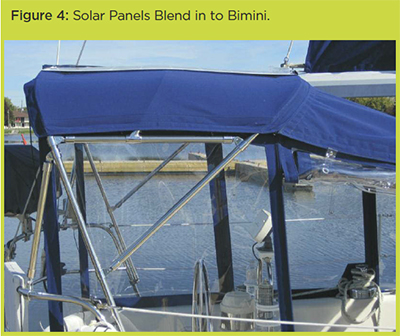 The two areas I did not get ‘right’ before we left were an engine overheating issue and 12 volt power management / solar charging. These two robbed us of days during our trip. We finally corrected the overheating issue and, as it seems, addressed some of our charging issues at the same time. Let me explain.
The two areas I did not get ‘right’ before we left were an engine overheating issue and 12 volt power management / solar charging. These two robbed us of days during our trip. We finally corrected the overheating issue and, as it seems, addressed some of our charging issues at the same time. Let me explain.
As if a bit of an omen, just after entering the Oswego Canal system, we blew an alternator belt. This was the first of many and given that we were motoring 10 hours each day I started carrying multiple spares. It was not until we were in Emerald Bay in the Exumas, while changing yet another water pump impeller that I made an interesting discovery about the water pump. I saw, what appeared to be strands of wire sticking out from the pump housing. On closer inspection, it turned out to be a damaged bearing. Damaged enough to slow down the pump though there was always water from the exhaust. It turned out not enough water was getting through to effectively cool the 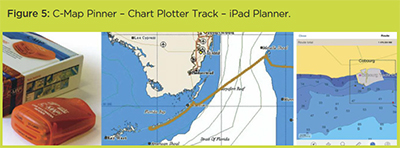 system. Unable to find a repair or replacement in the Bahamas, I called Steve Roll at Bristol Marine in Port Credit and he had a replacement pump on a plane to me the next day. After that, no overheating issues and my charging issues seemed to go away as well. The under-charging issue was caused in part by the damaged water pump dragging on the engine’s ability to turn the alternator. One system on a boat will often have an impact on another system.
system. Unable to find a repair or replacement in the Bahamas, I called Steve Roll at Bristol Marine in Port Credit and he had a replacement pump on a plane to me the next day. After that, no overheating issues and my charging issues seemed to go away as well. The under-charging issue was caused in part by the damaged water pump dragging on the engine’s ability to turn the alternator. One system on a boat will often have an impact on another system.
Lesson Learned – overheating and undercharging are two major issues that should have been corrected before leaving. 2016 plan – complete check-over of the engine and systems before the boat is launched and add 2 – 100 watt solar panels.
One of the operating principles I put in place is there would be no repairs done on my boat without me there, preferably turning the wrenches. I wanted to know my boat. A good friend of mine, Craig Morely of AquaMarine helped me a lot to better understand the systems on an older boat. Craig went through my systems with me. I recorded our conversations and then set out to update or repair everything on the list.
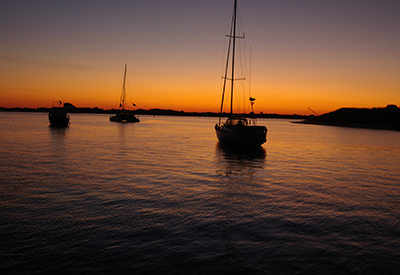 2016 Ready to Sail List
2016 Ready to Sail List
We replaced old 12-volt distribution panel with a new Blue Seas 3600 panel. We discovered too many scorched terminals and it was difficult to access the panel while cruising. It also gave me the opportunity to trace each piece of equipment and correct any problems with the wiring or terminals. We added a few bus bars and fuse block along the way.
We updated the wiring for the alternator, solar panels and battery charger. I had unwisely led them to a common positive bus bar. Now we can turn the solar on or off, depending on whether or not we are charging by alternator or shore power through the battery charger. Each system can be turned on or off individually. It was either that or invest in an energy management system, but we felt that would cut too far into our cruising budget.
Two years ago, we added solar panels. They are a little hard to see in this picture and that is the way we like it. We updated the canvas in 2014 and during the process acquired two 100-watt flexible solar panels. (To see more on these panels check out CY’s Ask the Experts You Tube channel.) We chose these slightly more expensive panels, because I did not want to add a frame to mount rigid panels – strictly personal preference.
Other updates are:
Updated chart plotter that will accept AIS data and allow wireless and/or Bluetooth plotting updates. For the 2009 trip, we made extensive use of our C-Map USB Multimedia Reader. When plugged into a PC, we were able to pre-plan routes, upload them to the chart plotter using data chips in addition to the chart chips. We would then finalize our routes on the plotter, save them and then download the revised routes along with our tracks to the data chip and then transfer the data to our laptop to be used the next time we were in that particular area.
I think the one thing we really learned from our last trip is that your choices are personal, so you listen to each opinion offered (and there will be many) and weigh them against your own wants and needs. Where I wanted to take Sojourn further south, Mary needed a more compact itinerary. The outcome is I that got to go south for a year and now I get to do it again.
Mary, although reluctant, has grown as a sailor, a boater and a cruiser. We met people from all over the cruising map and we are still in touch with many of them.
This time, we are going to leave a little earlier, take it a little slower, spend time in some places we rushed through and we feel more confident in our boat and our abilities. See you along the way.
Rob and Mary MacLeod.
{videobox}YGZAYtdIsUY{/videobox}




























